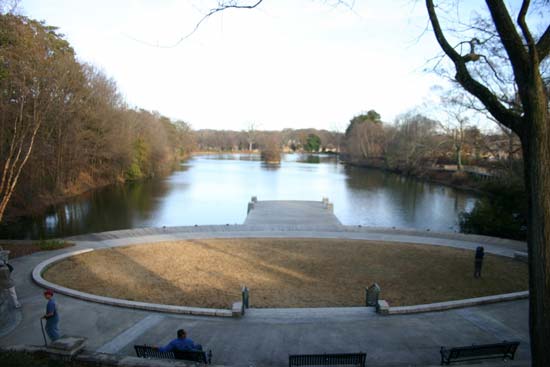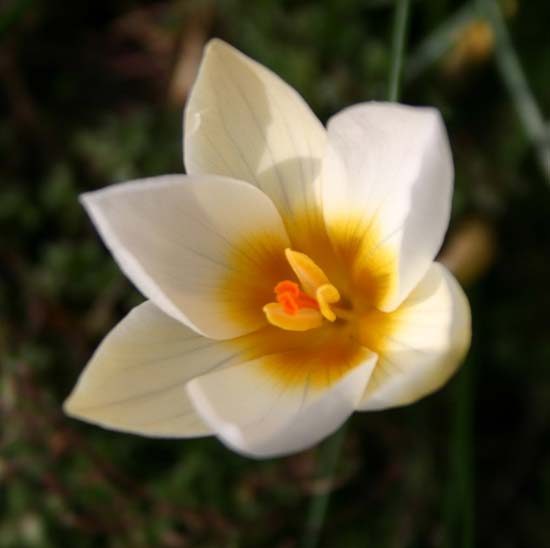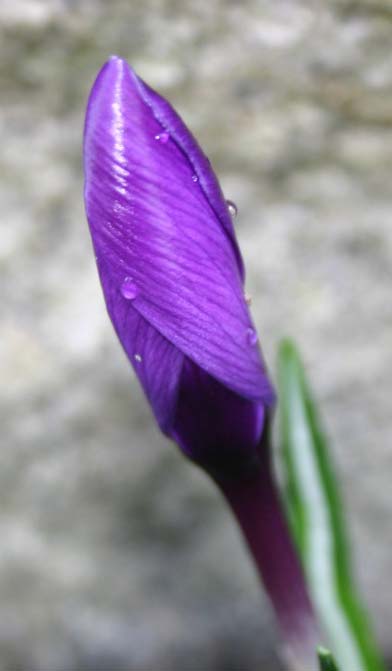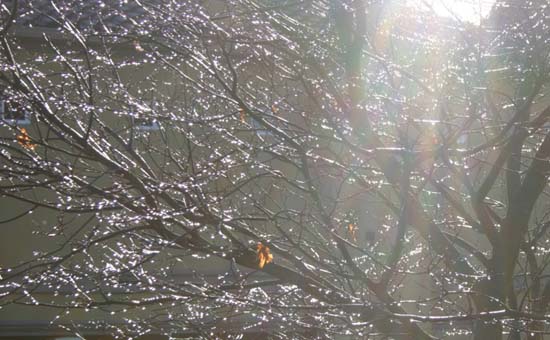Musings
 We’re back to our usual grind, here in Atlanta. One bright spot is a walk to Piedmont Park. I always enjoy this view east down Lake Clara Meer (even the Park’s web page doesn’t say who Ms. Meer was), and sometimes try to count the swimming ducks. The north bank (left in photo) used to have a resident pair of chickens (no lie!), but they seem to have moved on. Hopefully, one of the many dogs walked in the park didn’t get them!
We’re back to our usual grind, here in Atlanta. One bright spot is a walk to Piedmont Park. I always enjoy this view east down Lake Clara Meer (even the Park’s web page doesn’t say who Ms. Meer was), and sometimes try to count the swimming ducks. The north bank (left in photo) used to have a resident pair of chickens (no lie!), but they seem to have moved on. Hopefully, one of the many dogs walked in the park didn’t get them!
Posted at 5:44 PM |
Comments Off on Piedmont Park
 One topic floating around these parts, highlighted by Rebecca’s editor’s comments in a recent “Atlanta Magazine” (yes, the one with Clark Howard on the cover!), is cheap behavior. You know, like when my husband spends an hour cruising the web to detect the cheapest gas prices in town, then an hour cruising out to that station to fill up a 14-gallon tank!
One topic floating around these parts, highlighted by Rebecca’s editor’s comments in a recent “Atlanta Magazine” (yes, the one with Clark Howard on the cover!), is cheap behavior. You know, like when my husband spends an hour cruising the web to detect the cheapest gas prices in town, then an hour cruising out to that station to fill up a 14-gallon tank!
Still, if you need some “party wine” around your house, or want a budget alternative for daily consumption, if you can get to a Trader Joe’s try a bottle or two of Charles Shaw wines. Because their California prices are $1.99, they quickly picked up the nickname Two Buck Chuck—very clever, eh?
Anyway, you can’t deny that Two Buck Chuck is a deal (hey, most stores give a case discount on top of the already low price!), so give your cheap side free rein to try this one if you haven’t already!
Our sadness, here in Atlanta, is that the nearest Trader Joe’s is in Cincinnati, although we keep hearing rumors that Atlanta will get a store soon! Our fingers are crossed!
Posted at 8:17 AM |
Comments Off on Cheaper, cheapest?
 Monday. Rain, unceasing rain. A day so overcast night lights are on across the city even at midday. Puddles have advanced to near-lake status. Drainage sewers must be near capacity (I’ve yet to hear about any sink-holes yet, though!).
Monday. Rain, unceasing rain. A day so overcast night lights are on across the city even at midday. Puddles have advanced to near-lake status. Drainage sewers must be near capacity (I’ve yet to hear about any sink-holes yet, though!).
In contrast, I choose instead to post this image from a winter’s night in Michigan’s Upper Peninsula, collected from a visit to the memory chest we call iPhoto….
Posted at 5:06 PM |
Comments Off on Winter constellation

 Okay, I admit it, this was our outbound trip from Minneapolis (hence the deicing). Sun’s just coming out here in Seattle after a windy, windy day yesterday. Makes it hard to leave. Well, that and two super-cute nephews!
Okay, I admit it, this was our outbound trip from Minneapolis (hence the deicing). Sun’s just coming out here in Seattle after a windy, windy day yesterday. Makes it hard to leave. Well, that and two super-cute nephews!
Cagey planning by my hubby puts us airborne for The Game. Here’s a snapshot of my favorite Seahawks fan, Jay, who came for dinner the other day with her husband Carl and daughter Ashlan. (Jay and I met aeons ago at good ol’ MSU, back when Joyce wasn’t just the name on her driver’s license….)
Do three Twelves make thirty-six?
Posted at 12:28 PM |
Comments Off on Three Twelves


 Crocus blooms may be the unsung heroes of northern springtime. How can I improve on their brilliance with mere words?
Crocus blooms may be the unsung heroes of northern springtime. How can I improve on their brilliance with mere words?
Posted at 9:57 AM |
Comments Off on Crocus trio
 Apparently, even historians of Indian history are unaware that in the nineteenth century, a huge hedge, over 2300 miles at its longest, traversed much of India, built so the British could rake in even more cash from even the poorest Indians via a Salt Tax (and to a lesser degree, a tax on sugar). Take a look at Roy Maxham’s 2001 The Great Hedge of India (several editons, I think) for details.
Apparently, even historians of Indian history are unaware that in the nineteenth century, a huge hedge, over 2300 miles at its longest, traversed much of India, built so the British could rake in even more cash from even the poorest Indians via a Salt Tax (and to a lesser degree, a tax on sugar). Take a look at Roy Maxham’s 2001 The Great Hedge of India (several editons, I think) for details.
Scarce commodities or those with relatively few sources make good targets for control and taxation (good economic basis for political powergrabs). Salt can only be mined from or made in certain places (including along sea coasts), so the British were able to command construction of a barrier to trade into British India made of thorny plants, sometimes living (think acacias, prickly pear cacti, and euphorbias), or piled branches (harder to maintain but possible when plants wouldn’t take or were killed by vermin), with portals  every 4 miles or so manned by soldiers and customs agents. They abandoned the hedge in 1879, and its grade was reused for road beds (especially where it was elevated), or retaken for fields by farmers of adjacent plots. The hedge permitted collection of a tax on salt so high that made its cost prohibitive to most of India’s populace. At the same time, they taxed sugar passing the other direction.
every 4 miles or so manned by soldiers and customs agents. They abandoned the hedge in 1879, and its grade was reused for road beds (especially where it was elevated), or retaken for fields by farmers of adjacent plots. The hedge permitted collection of a tax on salt so high that made its cost prohibitive to most of India’s populace. At the same time, they taxed sugar passing the other direction.
Smuggling was common. Bags of sugar were loaded on camels that were rushed through the hedge. Others were lobbed over the hedge for collection by accomplices. Nevertheless, the British obtained a huge profit despite needing over 12,000 men to maintain and police the hedge.
Tidbits: Timbucktoo flourished because it controlled salt trade; salt tribute was taken in China as early as 2200 BC. Want more? Read the original….
Posted at 10:07 AM |
Comments Off on 2300-mile hedge

 Seattleites are fighting mold sprouting beneath their fingernails this year more than most (El Niño? global warming trends?), but at the odd moment in the afternoon the skies may relent and the Cascades reappear.
Seattleites are fighting mold sprouting beneath their fingernails this year more than most (El Niño? global warming trends?), but at the odd moment in the afternoon the skies may relent and the Cascades reappear.
Think of the smattering of Northwest Coast peoples’ mythologies you know—the role of ravens, for example—they will brave moderate rains to go about their business. We even saw them bathing in the creek in the rain! And squabbling with gulls over edible treasures…. [Yeah, I know these are crows; gimme some poetic license!]
Didn’t see any mold between their claws either!
Posted at 11:00 AM |
Comments Off on Deck view
 Rainy becomes sunny and the grey and flat becomes the sparkling of well-cut gems.
Rainy becomes sunny and the grey and flat becomes the sparkling of well-cut gems.
A front-page story on The Wall Street Journal on 31 Jan “Greenspan’s Legacy Rests on Results, Not Theories” by Greg Ip (sorry, I read the paper version, so no link) describes Greenspan’s philosophy for running the Fed as based on Bayesian-influenced risk management decision-making where he’s willing to deliberately risk smaller mistakes to prioritize avoiding much bigger ones. Drawing on Isaiah Berlin’s 1953 book categorizing people as having either hedgehog or fox approaches—Berlin got this idea from an ancient Greek, according to the web—Ip argues that Greenspan is a fox. Hedgehogs are those who have pretty fixed single beliefs and they aren’t willing or adept at altering their approaches or viewpoints based on new information. Foxes, on the other hand, draw from an array of traditions, aren’t hidebound, and accept ambiguity as inevitable.
So, are you mostly hedgehog or mostly fox and does it put you mostly in the rain or in the sun?
Posted at 12:43 PM |
Comments Off on Tree of diamonds
 We’re back to our usual grind, here in Atlanta. One bright spot is a walk to Piedmont Park. I always enjoy this view east down Lake Clara Meer (even the Park’s web page doesn’t say who Ms. Meer was), and sometimes try to count the swimming ducks. The north bank (left in photo) used to have a resident pair of chickens (no lie!), but they seem to have moved on. Hopefully, one of the many dogs walked in the park didn’t get them!
We’re back to our usual grind, here in Atlanta. One bright spot is a walk to Piedmont Park. I always enjoy this view east down Lake Clara Meer (even the Park’s web page doesn’t say who Ms. Meer was), and sometimes try to count the swimming ducks. The north bank (left in photo) used to have a resident pair of chickens (no lie!), but they seem to have moved on. Hopefully, one of the many dogs walked in the park didn’t get them! One topic floating around these parts, highlighted by Rebecca’s editor’s comments in a recent “
One topic floating around these parts, highlighted by Rebecca’s editor’s comments in a recent “ Monday. Rain, unceasing rain. A day so overcast night lights are on across the city even at midday. Puddles have advanced to near-lake status. Drainage sewers must be near capacity (I’ve yet to hear about any sink-holes yet, though!).
Monday. Rain, unceasing rain. A day so overcast night lights are on across the city even at midday. Puddles have advanced to near-lake status. Drainage sewers must be near capacity (I’ve yet to hear about any sink-holes yet, though!).
 Okay, I admit it, this was our outbound trip from Minneapolis (hence the deicing). Sun’s just coming out here in Seattle after a windy, windy day yesterday. Makes it hard to leave. Well, that and two super-cute nephews!
Okay, I admit it, this was our outbound trip from Minneapolis (hence the deicing). Sun’s just coming out here in Seattle after a windy, windy day yesterday. Makes it hard to leave. Well, that and two super-cute nephews!

 Crocus blooms may be the unsung heroes of northern springtime. How can I improve on their brilliance with mere words?
Crocus blooms may be the unsung heroes of northern springtime. How can I improve on their brilliance with mere words? Apparently, even historians of Indian history are unaware that in the nineteenth century, a huge hedge, over 2300 miles at its longest, traversed much of India, built so the British could rake in even more cash from even the poorest Indians via a Salt Tax (and to a lesser degree, a tax on sugar). Take a look at Roy Maxham’s 2001 The Great Hedge of India (several editons, I think) for details.
Apparently, even historians of Indian history are unaware that in the nineteenth century, a huge hedge, over 2300 miles at its longest, traversed much of India, built so the British could rake in even more cash from even the poorest Indians via a Salt Tax (and to a lesser degree, a tax on sugar). Take a look at Roy Maxham’s 2001 The Great Hedge of India (several editons, I think) for details. every 4 miles or so manned by soldiers and customs agents. They abandoned the hedge in 1879, and its grade was reused for road beds (especially where it was elevated), or retaken for fields by farmers of adjacent plots. The hedge permitted collection of a tax on salt so high that made its cost prohibitive to most of India’s populace. At the same time, they taxed sugar passing the other direction.
every 4 miles or so manned by soldiers and customs agents. They abandoned the hedge in 1879, and its grade was reused for road beds (especially where it was elevated), or retaken for fields by farmers of adjacent plots. The hedge permitted collection of a tax on salt so high that made its cost prohibitive to most of India’s populace. At the same time, they taxed sugar passing the other direction.
 Seattleites are fighting mold sprouting beneath their fingernails this year more than most (El Niño? global warming trends?), but at the odd moment in the afternoon the skies may relent and the Cascades reappear.
Seattleites are fighting mold sprouting beneath their fingernails this year more than most (El Niño? global warming trends?), but at the odd moment in the afternoon the skies may relent and the Cascades reappear. Rainy becomes sunny and the grey and flat becomes the sparkling of well-cut gems.
Rainy becomes sunny and the grey and flat becomes the sparkling of well-cut gems.